Infectious Diseases









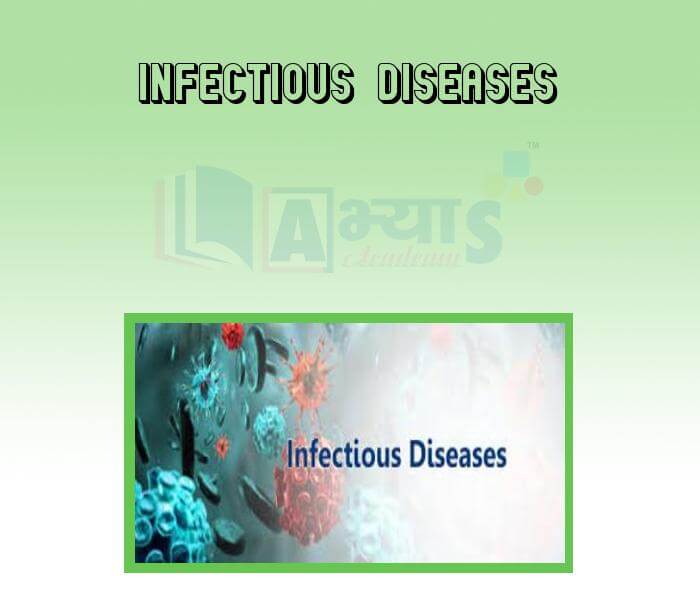
Infectious Diseases
Infectious diseases or communicable disease : An infectious disease that can be spread from one infected individual to another is called a communicable disease. An infectious disease can be spread from an infected person to a healthy person in many ways such as through food, water, air, direct contact, through a disease carrier like a mosquito, etc. Some infectious diseases are not communicable.
For example, tetanus is an infectious disease which affects the nerves and muscles of the patient. It is caused by a bacterium which enters the body when a wound comes in contact with contaminated soil or animal wastes. But tetanus cannot be spread from person to person. So, it is not a communicable disease.
Infectious diseases are caused by some biological agents (pathogens) such as viruses, bacteria, fungi and single- celled animal protozoans, etc. The presence of an infectious agent may affect the normal body function of the individual, leading to a disease. These can rapidly spread from one person to another by various means such as water, air, food, insects (vectors) or by physical contact. Some infectious diseases that develop and spread rapidly to many people are called epidemic diseases.
Infectious Agents: The unicellular or multicellular organisms that cause infection are called infectious agents. These disease causing organisms are also called pathogens and they are classified into a wide range of categories. Some of them are viruses, bacteria, fungi, protozoans, etc.
NOTE:
Corona disease 2019 (COVID-19) is also an infecticious disease. It is a contagious respiratory and vascular disease caused by SARS-CoV-2 virus.The first case was identified in Wuhan. Common symptoms of COVID-19 includes fever, cough, fatique,breathing difficulties,and loss of smell and taste.Symptoms begin in one to fourteen days after exposure to the virus.
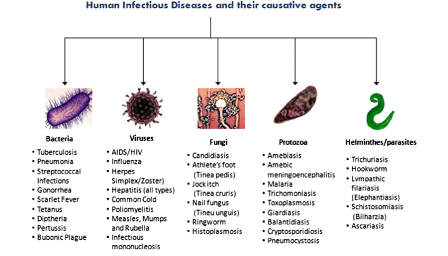
Among the following , an infectious disease is _____________. | |||
| Right Option : D | |||
| View Explanation | |||
Which of the following pairs of microorganism and diseases is wrongly matched ? | |||
| Right Option : D | |||
| View Explanation | |||
The symptoms of cough and breathlessness indicate______________ infection. | |||
| Right Option : A | |||
| View Explanation | |||
Students / Parents Reviews [20]
My experience was very good with Abhyas academy. I am studying here from 6th class and I am satisfied by its results in my life. I improved a lot here ahead of school syllabus.
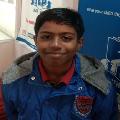
Ayan Ghosh
8thAbhyas is a complete education Institute. Here extreme care is taken by teacher with the help of regular exam. Extra classes also conducted by the institute, if the student is weak.

Om Umang
10thAbhyas is an institute of high repute. Yogansh has taken admission last year. It creates abilities in child to prepare for competitive exams. Students are motivated by living prizes on basis of performance in Abhyas exams. He is satisfied with institute.
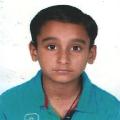
Yogansh Nyasi
7thI have spent a wonderful time in Abhyas academy. It has made my reasoning more apt, English more stronger and Maths an interesting subject for me. It has given me a habbit of self studying

Yatharthi Sharma
10thAbout Abhyas metholodology the teachers are very nice and hardworking toward students.The Centre Head Mrs Anu Sethi is also a brilliant teacher.Abhyas has taught me how to overcome problems and has always taken my doubts and suppoeted me.
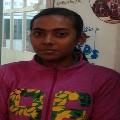
Shreya Shrivastava
8thIt was a good experience with Abhyas Academy. I even faced problems in starting but slowly and steadily overcomed. Especially reasoning classes helped me a lot.

Cheshta
10thIt has a great methodology. Students here can get analysis to their test quickly.We can learn easily through PPTs and the testing methods are good. We know that where we have to practice

Barkha Arora
10thAbhyas Methodology is very good. It is based on according to student and each child manages accordingly to its properly. Methodology has improved the abilities of students to shine them in future.

Manish Kumar
10thWhen I have not joined Abhyas Academy, my skills of solving maths problems were not clear. But, after joining it, my skills have been developed and my concepts of science and SST are very well. I also came to know about other subjects such as vedic maths and reasoning.

Sharandeep Singh
7thMy experience with Abhyas academy is very good. I did not think that my every subject coming here will be so strong. The main thing is that the online tests had made me learn here more things.
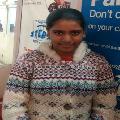
Hiya Gupta
8thAbhyas institute is one of the best coaching institute in the vicinity of Ambala cantt.The institute provides good and quality education to the students.The teachers are well experienced and are very helpful in solving the problems. The major advantages of the institute is extra classes for weak...
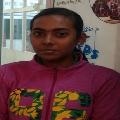
Shreya Shrivastava
8thAbhyas institute is one of the best coaching institute in the vicinity of Ambala Cantt area. The teachers of the institute are well experienced and very helpful in solving the problems of the students.The good thing of the institute is that it is providing extra classes for the students who are w...

Aman Kumar Shrivastava
10thUsually we see institutes offering objective based learning which usually causes a lag behind in subjective examinations which is the pattern followed by schools. I think it is really a work of planning to make us students grab the advantages of modes of examination, Objective Subjective and Onli...
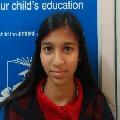
Anika Saxena
8thA marvelous experience with Abhyas. I am glad to share that my ward has achieved more than enough at the Ambala ABHYAS centre. Years have passed on and more and more he has gained. May the centre flourish and develop day by day by the grace of God.

Archit Segal
7thIn terms of methodology I want to say that institute provides expert guidence and results oriented monitering supplements by requsite study material along with regular tests which help the students to improve their education skills.The techniques of providing education helps the students to asses...

Aman Kumar Shrivastava
10thMy experience with Abhyas Academy has been very good. When I was not in Abhyas whenever teacher ask questions I could not speak it confidently but when I came in Abhyas, my speaking skills developed and now I am the first one to give the answer of teachers question.
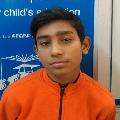
Upmanyu Sharma
7thWe started with lot of hope that Abhyas will help in better understnding of complex topics of highers classes. we are not disappointed with the progress our child has made after attending Abhyas. Though need to mention that we expected a lot more. On a scale of 1-10, we would give may be 7.

Manya
8thMy experience with Abhyas is very good. I have learnt many things here like vedic maths and reasoning also. Teachers here first take our doubts and then there are assignments to verify our weak points.

Shivam Rana
7thThird consective year,my ward is in Abhyas with nice experience of admin and transport support.Educational standard of the institute recumbent at satisfactory level. One thing would live to bring in notice that last year study books was distributed after half of the session was over,though study ...

Ayan Ghosh
8thMy experience with Abhyas academy is very nice or it can be said wonderful. I have been studying here from seven class. I have been completing my journey of three years. I am tinking that I should join Abhyas Academy in tenth class as I am seeing much improvement in Maths and English
